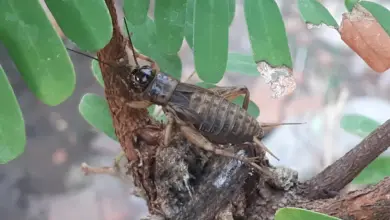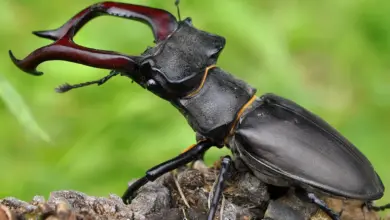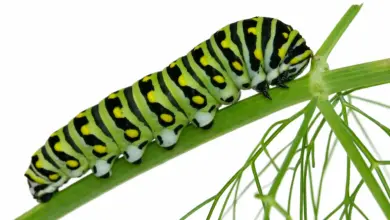Where Do Atlas Moths Live
Where Do Atlas Moths Live: Unveiling Their Fascinating Habitats
Atlas moths are a captivating and unique species of moth that seem almost otherworldly due to their grand size and striking appearance. You might be curious about where these impressive creatures reside and how they survive in their natural habitat.
[ez-toc]
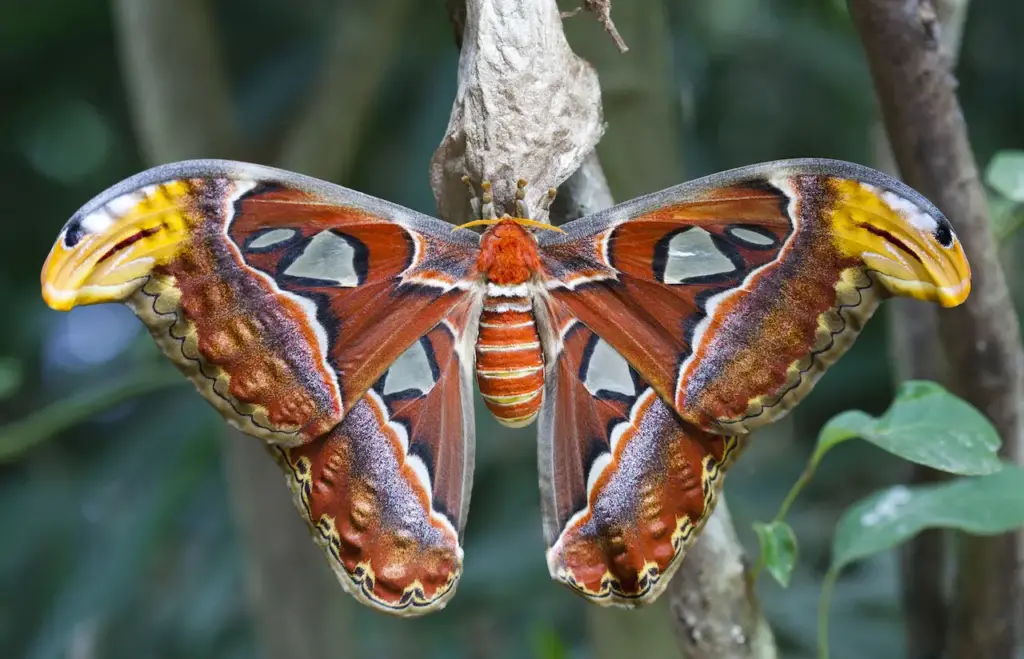
Where Do Atlas Moths Live
These majestic moths can be found primarily in the tropical and subtropical forests of Southeast Asia, from India to the Philippines. Their exceptional ability to blend into their environment helps them thrive, as they prefer lush, diverse ecosystems with abundant plant life to camouflage themselves and lay their eggs.
In these thriving habitats, Atlas moths lead a fascinating life cycle that allows them to transform from caterpillars into the beautiful moths you might be familiar with. Let’s explore more about their intriguing life in these vivid, lush landscapes.
Native Habitat of Atlas Moth
Atlas moths, scientifically known as Attacus atlas, are predominantly found in various regions of Asia. They’re native to countries such as India, China, Indonesia, Taiwan, Southeast Asia, Cambodia, Hong Kong, Nepal, Malaysia, the Philippines, Bangladesh, and Laos.
These fascinating creatures thrive in tropical and subtropical environments. They prefer warmer climates that allow them to breed, feed, and survive with relative ease. As you explore these regions, you might come across Atlas moths in forests, parks, and even residential areas with abundant vegetation.
Some interesting features of Atlas moths:
- One of the largest moths in the world, with a wingspan of over 9.8 inches
- Females are slightly larger than males
- Adult Atlas moths don’t have functional mouthparts and only live for a few days to a week
Comparing some countries where atlas moths are found:
| Country | Habitat Preference | Remark |
|---|---|---|
| India | Tropical forests, gardens, and parks | Also a vital part of the country’s silk industry |
| China | Forests in southern and southeastern regions | Culturally significant in traditional Chinese artwork and folklore |
| Indonesia | Rainforests and urban environments where vegetation is available | Yet another country where Atlas moths contribute to silk production |
Now that you know where Atlas moths call home, you might have a better appreciation for their beauty and unique features. These remarkable creatures are a living testament to the diverse flora and fauna found across Asia.
Living Environment
Atlas moths thrive in a range of environments, such as tropical forests, shrublands, secondary forests, and areas with evergreen trees. Let’s dive into their living environments:
Tropical Forests:
You’ll often find Atlas moths in the warm, humid conditions of tropical forests. These lush habitats offer abundant food sources and shelter, which is vital for their survival.
Shrublands:
Shrublands are another ecosystem in which Atlas moths reside. Areas covered by shrubs provide ideal hiding spots and ample food for these moths during their varying life stages.
Secondary Forests:
Secondary forests, which are those regenerating after disturbances like logging or fires, also make suitable homes for Atlas moths. They adapt well to these environments due to the mix of plant species and habitats within these recovering ecosystems.
Evergreen Trees:
Atlas moths are also found in regions with evergreen trees, particularly at lower elevations. Trees provide them with indispensable camouflage, protection, and sustenance.
When considering the Atlas moth’s living environment, it’s essential to remember that they prefer warmth and humidity. So, choose their habitat accordingly to ensure optimal conditions for their growth and well-being.
Species Classification
The Atlas moth (Attacus atlas) is an impressive species that belongs to the Animalia kingdom, Arthropoda phylum, and Insecta class. In terms of taxonomy, these magnificent moths fall within the family Saturniidae and the genus Attacus. Native to Southeast Asia, A. atlas has the distinction of being one of the largest moth species in the world.
Let’s take a closer look at this insect’s classification:
- Kingdom: Animalia
- Phylum: Arthropoda
- Class: Insecta
- Family: Saturniidae
- Genus: Attacus
- Species: A. atlas
The Atlas moth is not only part of the largest moth species, but it is also one of the largest insects overall. Their remarkable size makes them easy to spot, and their stunning patterns and colors are truly awe-inspiring.
Here is a quick comparison of the Atlas moth to other insects:
| Atlas Moth | Other Insects | |
|---|---|---|
| Size | One of the largest moths | Varies, typically smaller |
| Wingspan | Up to 30 cm (11.8 inches) | Generally much smaller |
| Distribution | Southeast Asia | Worldwide |
In conclusion, always remember that the Atlas moth is a fascinating specimen belonging to the Saturniidae family, and their classification not only showcases their uniqueness but also their fascinating characteristics.
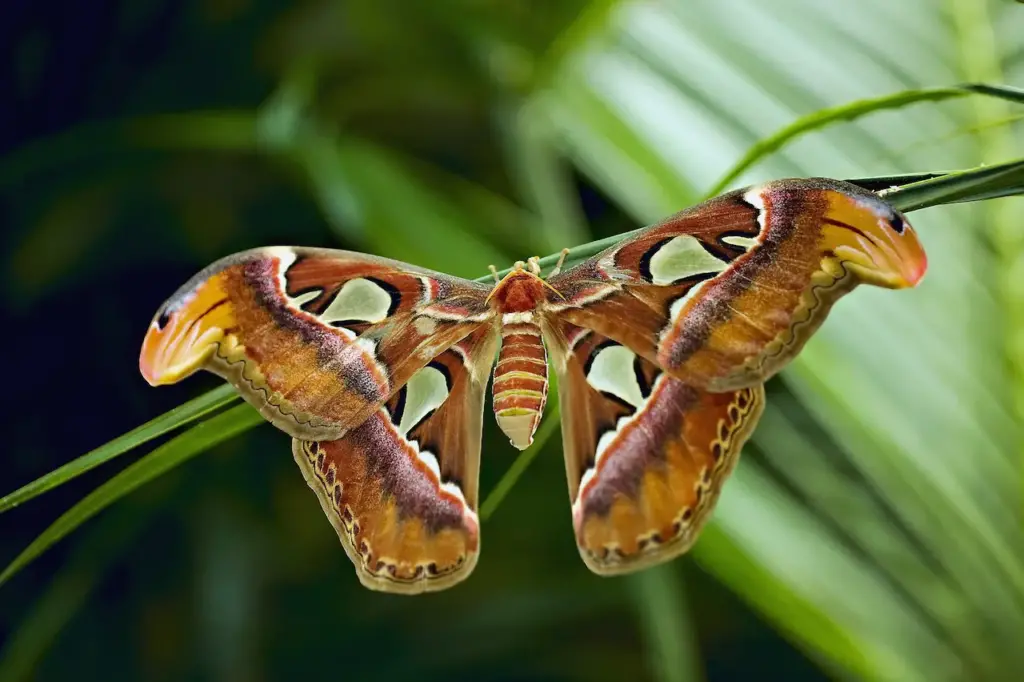
Morphology and Appearance
The Atlas moth (Attacus atlas) is a fascinating creature known for its impressive size. One of its most striking features is its wingspan, which can reach over 9.8 inches. Females are slightly larger than males.
Their wings display a combination of tan and brown colors. The intricate details on their wings include unique patterns and markings that resemble a mix of spots and lines. These features not only make them attractive but also provide a form of camouflage.
- Wingspan: Over 9.8 inches
- Colors: Tan and brown
- Patterns: Spots and lines
In addition to their large wings, Atlas moths have feathery antennae. Compared to other large moths like the White Witch moth and the Hercules moth, the Atlas moth distinguishes itself with its remarkable wing patterns.
For a quick comparison among these three giant moths, consider the following table:
| Moth Species | Wingspan Range | Notable Features |
|---|---|---|
| Atlas Moth | 9.8+ inches | Intricate patterns |
| White Witch Moth | 11+ inches | Lighter coloration |
| Hercules Moth | 10.6+ inches | Bold markings |
As you can see, the Atlas moth stands out for its intricate patterns and large wingspan. This amazing creature is sure to capture your attention with its incredible appearance.
Life Stages
Atlas moths go through a series of stages in their lives, just like most other insects. Let’s explore some of these stages in brief.
Eggs: The life of an Atlas moth begins as an egg. Female moths lay their eggs on the leaves of their preferred host plants, where they’ll eventually hatch into caterpillars.
Caterpillars: Upon hatching, the caterpillars of Atlas moths are quite hungry. They spend most of their time eating leaves and growing rapidly. These caterpillars are known to have vibrant colors and unique patterns.
Larvae and Pupae: After a few weeks of feasting and growing, it’s time for the caterpillars to enter the next phase of their lives – the pupal stage. They’ll find a safe spot to create a silk cocoon around themselves and transform into pupae.
During the pupal stage, the caterpillars undergo metamorphosis. While inside their cocoon, they’ll transform into adult moths, a process that can take a few weeks.
Metamorphic stages:
- Caterpillar
- Pupa
- Adult moth
Adults: When they’re ready, adult Atlas moths emerge from their cocoons, revealing their large, beautiful wings. Adults have a short lifespan, sometimes only living for a few days to a week, as they lack functional mouthparts and don’t eat. During this time, their primary goal is to find a mate and reproduce, continuing the life cycle.
It’s fascinating to learn about the different stages of an Atlas moth’s life, from the beginning as tiny eggs to their transformation into large, captivating moths.
Diet and Predators
Atlas moths mainly rely on a few types of plants for their food. As a caterpillar, they consume leaves of citrus and guava trees. During this stage, they have to eat a lot to store energy for their short adult life.
Adult Atlas moths, however, do not eat. They lack functioning mouthparts and survive on the energy stored as caterpillars. This means their adult life lasts only for a few days to a week.
In terms of predators, these moths face threats from various animals such as ants, birds, and lizards. Due to their vibrant colors and large size, they are easily spotted by birds who seize the opportunity for a meal. Lizards are also capable of catching Atlas moths in their habitat.
To summarize:
- Citrus and guava leaves are the preferred food for caterpillars
- Adult Atlas moths do not eat at all, relying on energy from their caterpillar stage
- Ants, birds, and lizards are common predators of Atlas moths.
Reproductive Cycle
Atlas moths, known for their impressive size and beautiful patterns, have an intriguing reproductive cycle. In this section, we’ll discuss how they find a mate and how pheromones play a crucial role in their reproduction process.
Finding a mate: To attract a mate, female Atlas moths release pheromones, chemical signals that are detected by the males’ highly sensitive antennae. The male’s large, feathery antennae allow them to detect these pheromone signals from several kilometers away.
Mating process: Once the male locates a female, he uses his proboscis to transfer sperm to the female. The mating process can last for several hours, during which the male and female remain attached to one another.
- Key features of Atlas moth reproduction:
- Females release pheromones to attract males
- Males have feathery antennae to locate females
- Mating process involves transferring sperm via the proboscis
After successful mating, the female lays her eggs on suitable host plants for the caterpillars to feed on. The eggs hatch within a couple of weeks, giving rise to the next generation of Atlas moths.
In conclusion, the reproductive cycle of Atlas moths revolves around the use of pheromones for mate attraction and the specialized anatomy of these insects, such as their antennae and proboscis. This enables successful reproduction and ensures the survival of their species.
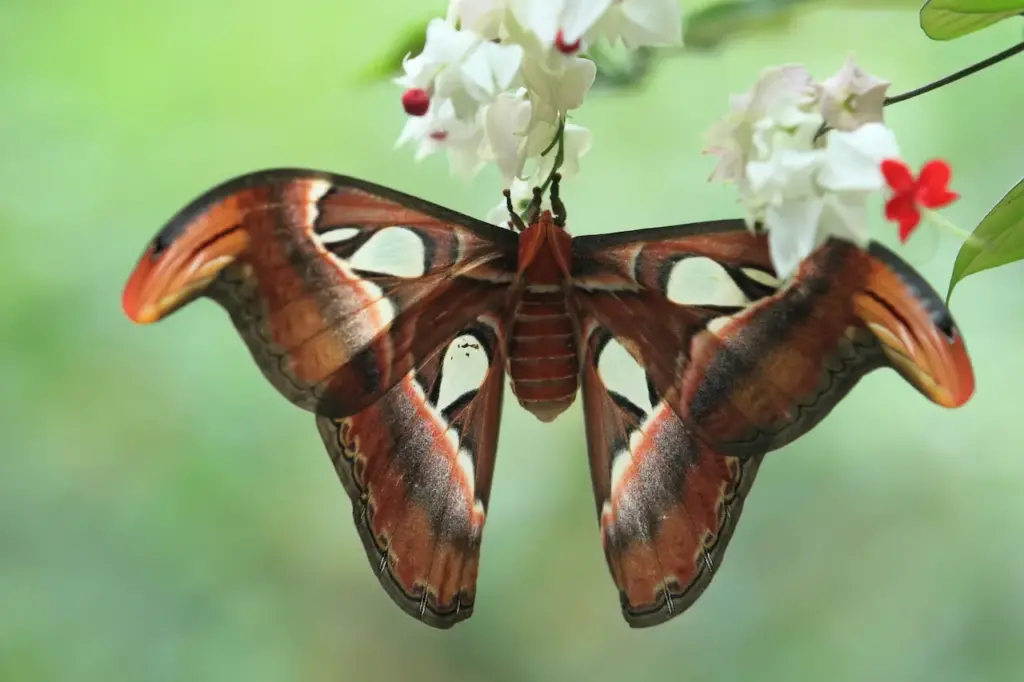
Interaction with Humans
Atlas moths are fascinating creatures known for their gigantic size and stunning coloration. Their unique appearance sparks human curiosity and interaction. In this section, you’ll discover how atlas moths connect with human activities, including silk production, fashion items like purses and ties, and the simple experience of holding one in your hand.
These moths play a role in the production of silk. While not as famous as the Bombyx mori, or silkworm, atlas moths produce a unique form of silk called fagara silk. This type of silk is less refined compared to traditional mulberry silk, but it has unique properties that set it apart. For instance, fagara silk is a more sustainable option since it doesn’t require harming the moth, unlike mulberry silk production.
Atlas moth silk has been used to create various fashion items. Two examples are purses and ties. These products offer a cruelty-free alternative to traditional silk, trading the smooth texture of mulberry silk for the ethical benefits of fagara silk. As a result, more and more conscious consumers are opting for fashion items that incorporate atlas moth silk.
Having a close interaction with an atlas moth can be a memorable experience. Holding one in your hand allows you to appreciate the sheer size and beauty of these magnificent insects. Moreover, it reminds us of the importance of preserving their natural habitats and supporting the intricate ecosystem they’re a part of.
In conclusion, atlas moths have diverse and meaningful interactions with humans. Whether in the form of sustainable silk production, eco-friendly fashion items, or simply appreciating their beauty, these extraordinary creatures inevitably inspire awe and respect.
Conservation and Threats
In recent years, Atlas moths have faced various challenges that threaten their population. While their conservation status is not yet listed as threatened, it’s essential to understand the factors affecting them.
One of the primary concerns for Atlas moths is habitat loss. As forests are cleared for agriculture and urban development, these beautiful creatures lose their natural homes. This factor drives the decline in their numbers and could result in them becoming threatened in the future.
You might be wondering how to help Atlas moths. Here are some steps to contribute to their conservation:
- Support organizations that work to protect habitats and conserve biodiversity.
- Plant trees and other vegetation that provide suitable habitats for these moths.
- Reduce pesticide use in your gardens and promote eco-friendly practices in pest control.
By being aware of these threats and supporting conservation efforts, you can play a role in ensuring that future generations can witness the beauty of Atlas moths.
Mythology and Names
Atlas moths, known for their striking appearance and large size, have a connection to Greek mythology. In these ancient tales, Atlas was a Titan who fought against the gods and was punished by Zeus to hold up the sky for eternity.
You may wonder how this mythological figure relates to these fascinating creatures. The name “Atlas moth” likely comes from the Titan of Greek mythology, symbolizing their grandeur and magnificence. Additionally, the moth’s wing patterns resemble a map or an atlas, further reinforcing the association with the mythological figure.
In summary:
- Atlas: Titan of Greek mythology, punished to hold up the sky.
- Atlas moth: Named after Atlas, symbolizing grandeur and magnificence.
It’s interesting to explore the connections between the natural world and ancient mythology. In this case, the Atlas moth’s name highlights both its impressive size and its beautiful wing patterns.
Unique and Interesting Facts
Atlas moths are fascinating creatures belonging to the Lepidoptera family. They exhibit intriguing characteristics, making them an interesting subject for study.
One impressive feature of Atlas moths is their camouflage ability. They can blend in with their environment by mimicking a leaf, right down to the finest details like leaf veins. This skill helps protect them from predators.
Atlas moths are known for their large size and unique morphology. Their wingspan can reach up to 12 inches, making them one of the largest moths in the world. Another interesting aspect is their energy conservation. Adult Atlas moths don’t have fully formed mouthparts and therefore don’t eat. Instead, they rely on fat reserves for energy throughout their short adult lives, which usually last a week or two.
These moths are avid fliers, capable of covering vast distances and evading predators in the process. Their wings are decorated with interesting patterns that serve both as a means of deterring predators and attracting mates.
Atlas moths have developed specialized chemoreceptors that help them locate suitable host plants for their larvae. Some of the preferred host plants are Jamaican cherry trees, privet, cinnamon, and fagara. The caterpillars feed on these plants before they pupate and transform into adults.
Here’s a brief comparison of Atlas moth to the White Witch moth:
| Aspect | Atlas Moth | White Witch |
|---|---|---|
| Family | Saturniidae | Uraniidae |
| Wingspan | Up to 12 inches (30 cm) | Up to 11 inches (28 cm) |
| Camouflage | Mimics a leaf | Not as detailed as Atlas moth |
| Caterpillar Diet | Jamaican cherry, privet, cinnamon, fagara | Piperaceae plant family |
Interestingly, when threatened, Atlas moth larvae can secrete an irritant secretion as a defense mechanism against predators. This secretion keeps predators at bay, ensuring the caterpillars can continue their development.
In conclusion, Atlas moths are fascinating members of the Lepidoptera family with unique characteristics, such as camouflage, energy conservation, and impressive flying abilities. They showcase a captivating blend of beauty and adaptiveness in the natural world.
